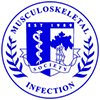Multiple Periprosthetic Joint Infections: Evidence for Decreasing Prevalence
Authors: Haverstock JP, Somerville L, Naudie DD, Howard JL. University of Western Ontario, London, ON
Title: Multiple Periprosthetic Joint Infections: Evidence for Decreasing Prevalence
Background: Multiple periprosthetic joint infections (MPJI) are an uncommon, but devastating complication. Historic reports detailing the occurrence of a second or metachronous infection show a high rate of secondarily infected hip and knee arthroplasties.
Hypothesis/Purpose: The purpose of this study was to determine the prevalence of developing a second periprosthetic joint infection in patients with multiple arthroplasties and detail the timing, pathogens, risk factors and outcome.
Methods: Our institutional arthroplasty database was queried for all hip and knee surgeries for infection from 1995 to 2011. All patients with multiple hip and knee joint arthroplasties that had subsequent surgery for infection were identified. The subset of patients that developed a second infection had a retrospective chart review undertaken to determine pathogen, timing of infection, and risk factors.
Results: 206 patients with multiple arthroplasties (446 arthroplasties in total) had at least one surgery for infection. Ten of these patients (5%) experienced a second periprosthetic joint infection. The initial pathogen was responsible for the second infection in four cases, all of which were Staphylococcus Aureus infections. Five of the secondary infections were polymicrobial. Time between first and second infection ranged from 57 days to 9.1 years (Mean 3.4 years, SD 3.3 years). Risk factors for infection did not reveal a significant pattern; however, one patient was treated for rheumatoid arthritis. Infection was successfully treated in five patients and five received chronic antibiotic suppression.
Discussion: There has been a significant decrease in the prevalence of multiple periprosthetic joint infections compared to previous studies. Potential factors that may account for this decrease include the increased use of antibiotic cement and two-stage revision procedures. Modern guidelines regarding perioperative antibiotic administration and the early treatment of sepsis as well as the decreased need for arthroplasty in those with rheumatoid arthritis are other considerations.
Conclusion: The rate of multiple periprosthetic joint infections in the current series is significantly lower than previously reported. Co-morbidities and time to second infection do not give clear evidence that a specific mode of transmission that contributes to the development of a second periprosthetic joint infection.

